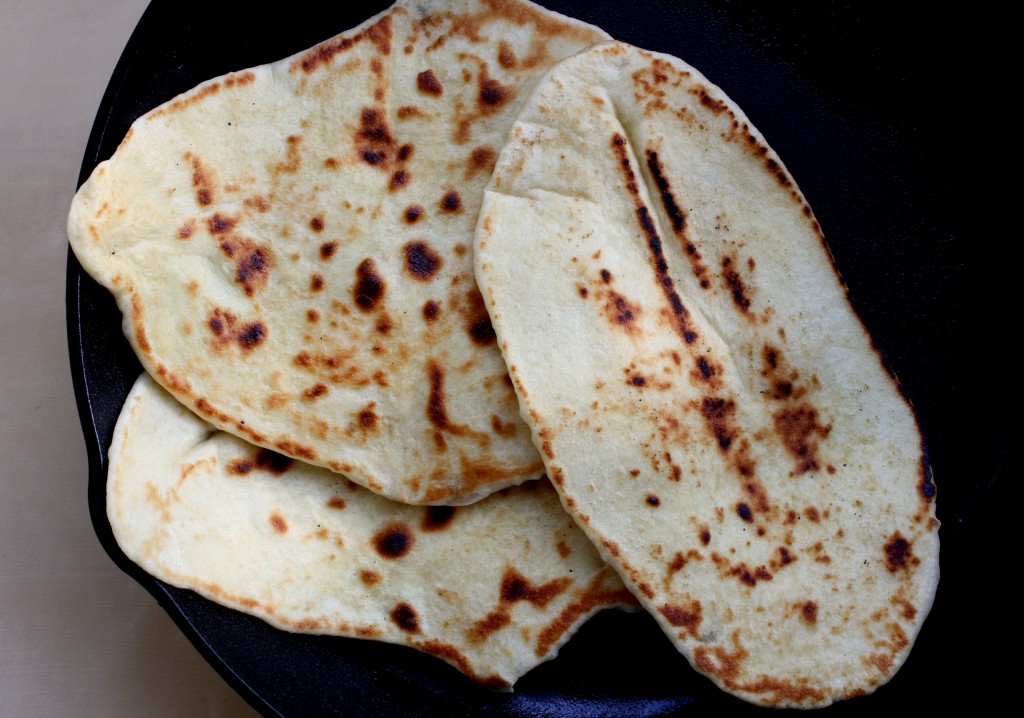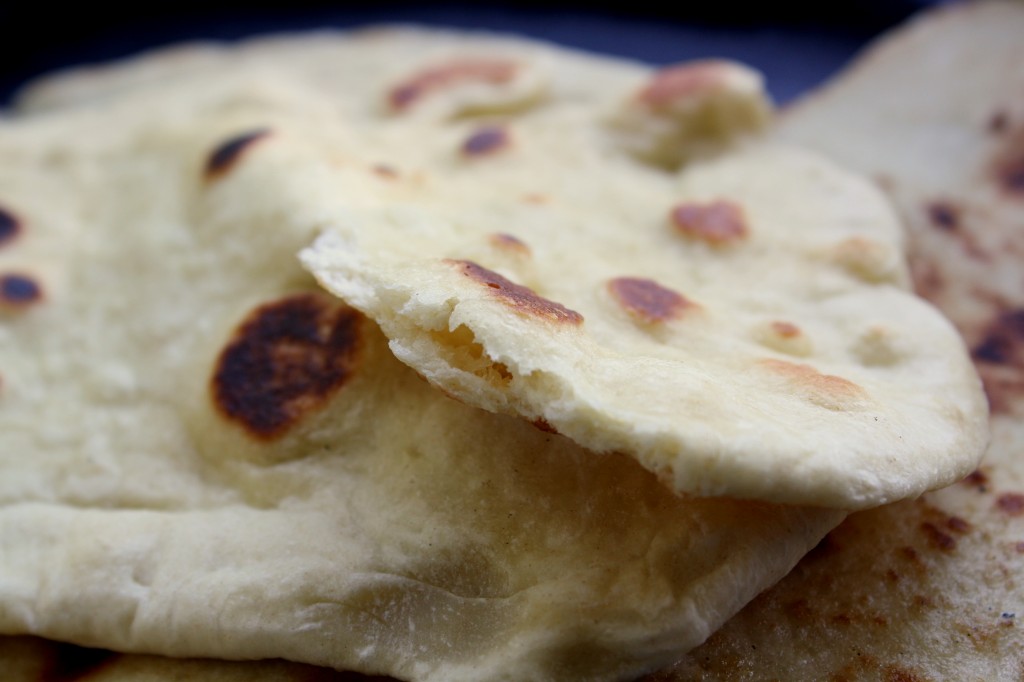This evening I had one of those “mommy wow I’m a big kid now” moments as I watched my first successful naan bubble and animate on the skillet. Of all Indian food, naan is definitely the most beloved in the US — it has a toasted, buttery exterior and a feathery, pillowy interior that seems to beckon long after the main dishes are finished. Unfortunately, it’s also the hardest to fake.
Traditionally naan is made on the side of a hot tandoor, a clay oven that can get up to temperatures of 800F. Try the same thing with dough this thin in the 500F of a conventional oven and you end up with a large cracker. Enter the cast iron skillet — I have no idea how hot it gets, but unlike most skillets it can take extremely high sustained heat, just the thing to roast the naan without overcooking the interior. Because I think I can improve on the flavor and make the thing even fluffier, I’m going to provide the recipe now and do a full run-through next week. Stay tuned!
Ingredients
- 2 tsp sugar
- 1/2 packet of active dry yeast
- 1/4 +1/4 cup lukewarm water
- 1 3/4 cup AP flour
- 1 Tbsp salt
- 2 Tbsp olive oil
- 2 Tbsp melted butter
Combine the sugar, yeast, and 1/4 cup water in a small bowl, and stir to combine. In about 5 minutes there should be a foam forming on the top of the mixture; if not your yeast are probably too cold or too dead. In another bowl, combine the flour and salt thoroughly. Mix 1 Tbsp of olive oil into the yeast, then add the yeast mixture into the flour mixture. Use the second 1/4 cup of water to rinse the yeast bowl, and empty that into the flour mixture too.
Use a wooden spoon to mix into a shaggy dough, then plop it onto the counter and start kneading. At first the dough will seem hard to handle, but keep kneading it and the gluten will hold it together over time. Knead for at least 12 minutes — at the end the dough should be relatively smooth, with the tackiness of a post-it note.
Gently roll it into a ball with your hands. Put 1 Tbsp of olive oil into a clean bowl, put the dough inside, and gently move the ball to coat it with olive oil. Cover with plastic wrap and let sit on the counter for 1-3 hours (I waited 1, next time I will wait 3).
After that, take out the dough and punch it down. Pull lemon-sized pieces from the ball, and use a rolling pin to roll the dough out as thin as possible. Heat your skillet over a medium-high flame for 3 min, brush some butter on the rolled-out dough, then place the dough on the skillet butter side down. Go ahead and spoon some butter on the up-facing side, and use the back of the spoon to spread it around.
Each side should take less than 5 minutes; periodically check underneath to see if there are charred sections. When the naan is done on one side, flip to the other side, and when that is done transfer the naan to a cooling rack.






4 Responses to Flatbread (Naan)